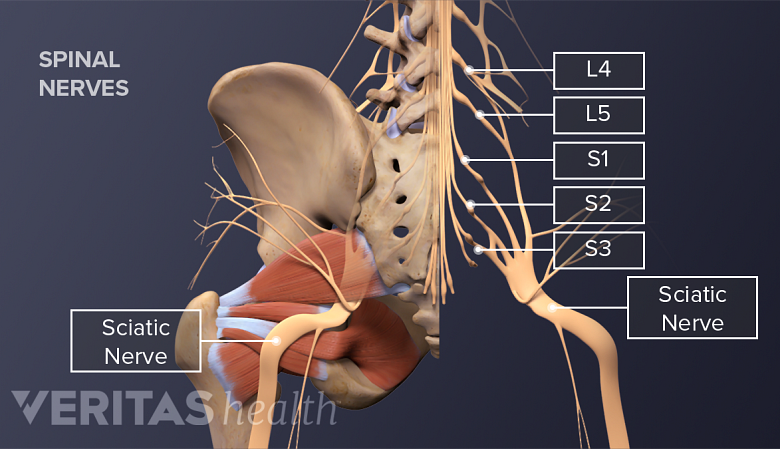A pain in the butt!
Written by Nick Lee, Physiotherapist at The Joint Physio
Sciatica? Is it just a pinched nerve?
Have you experienced pain in the lower back, radiating down into your bottom and legs? You may be dealing with sciatica, a condition that can often be uncomfortable and debilitating. Let’s delve deeper into it.
What is sciatica?
Before we explore further, it’s important to understand the anatomy of the lower back (lumbar spine), particularly the nerves.
The lumbar region refers to the lowest 5 unfused bones (vertebrae) of the spine. The sciatic nerve originates from small roots that leave the spinal chord and exit between the lowest vertebrae, joining together to form one thick nerve., particularly from the L4 to S3 vertebrae. After its formation, it leaves the pelvis, and runs deep beneath the gluteals and surfacing beside the piriformis muscle, before travelling down the back of your thigh where it splits again into the tibial and common fibular nerve.
The sciatic nerve directly provides motor innervation to the back of the thigh, while the tibial and common fibular nerve (branches of sciatic nerve) innervates the side of the foot and ankle. It also has sensory innervation to the foot and ankle. Issues often arise when the nerve gets compressed, pinched or irritated, resulting in various symptoms including tingling, numbness or pain along its pathway.

What causes it to be compressed/irritated?
Various potential factors can lead to this, including compression from changes to the disc (a strong and spongy, shock-absorbing ‘cushion’ that sits between the vertebrae), muscle weakness and spasms, inflammation and other trauma or degenerative changes to the surrounding skeletal structures (stenosis). Symptoms may manifest as pain, cramps, numbness, pins and needles and/or muscle weakness. The pain may be sharp or can lead to more of a burning sensation, especially when radiating down the leg.
Identifying the offending structures and the likely causes for the condition is essential in developing an effective treatment plan. Assessment should begin with an interview to sustain a thorough history of the patients condition and should also include assessment of lumbar range of motion, nerve tests, tendon reflexes, palpation as well as muscle strength and function.
What does treatment look like?
Treatment often varies from person to person and must be individualised based on severity, history, lifestyle and goals. However, it typically involves some form of manual therapy, strategies to relieve pain and increase mobility, targeted exercises to restore movement and function and ultimately address primary causes as well as strengthen and future-proof to prevent further recurrence. It’s important to emphasise that an active approach has good evidence to help improve pain and disability and that if you have been protecting your spine by avoiding certain movements, you may actually be causing weakness and imbalances!
If this sounds like your situation and you are considering treatment, we’d love to help you take the first steps to recovery! We are all trained to help manage this condition.

